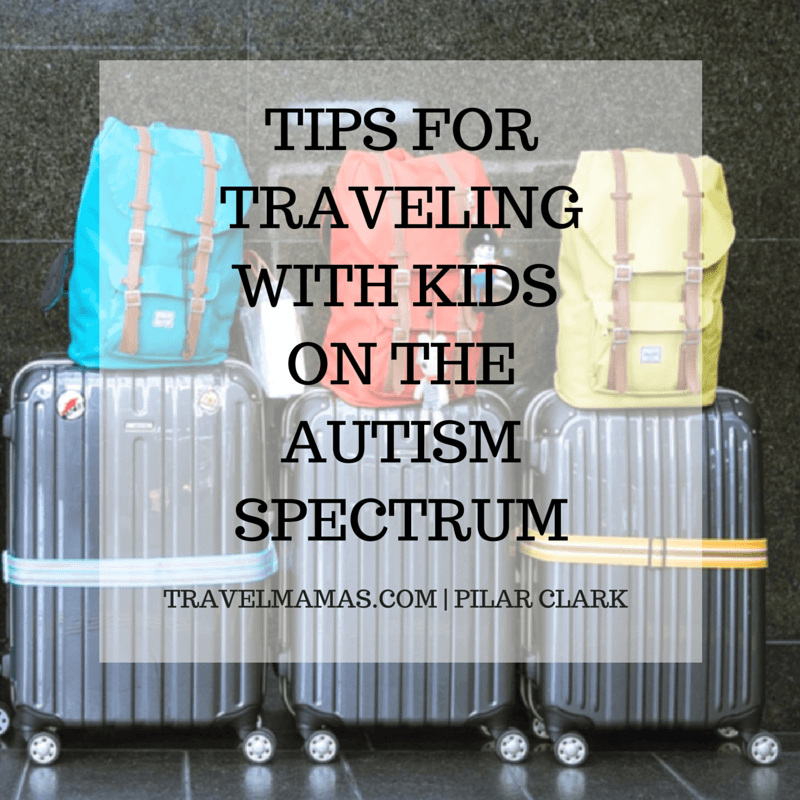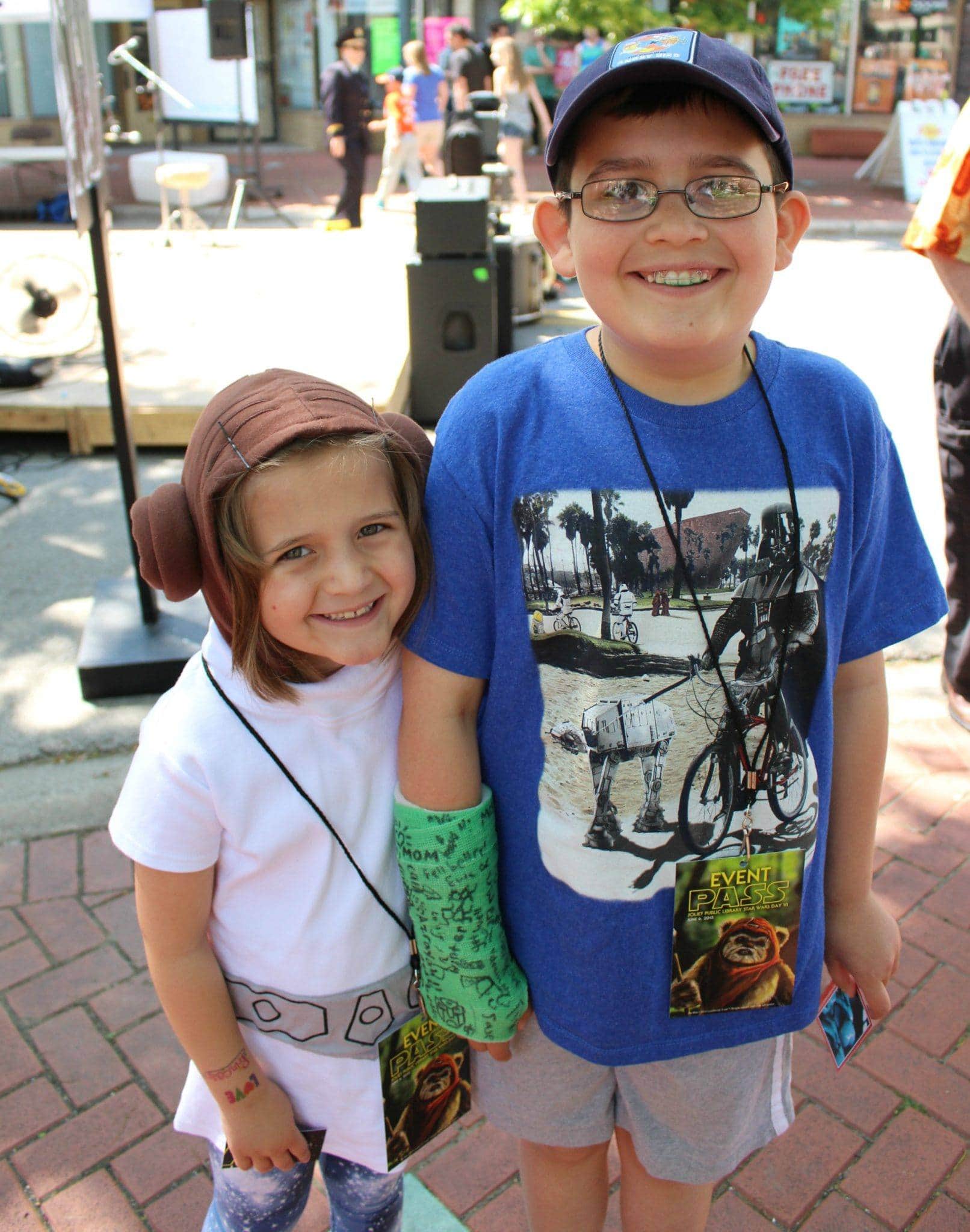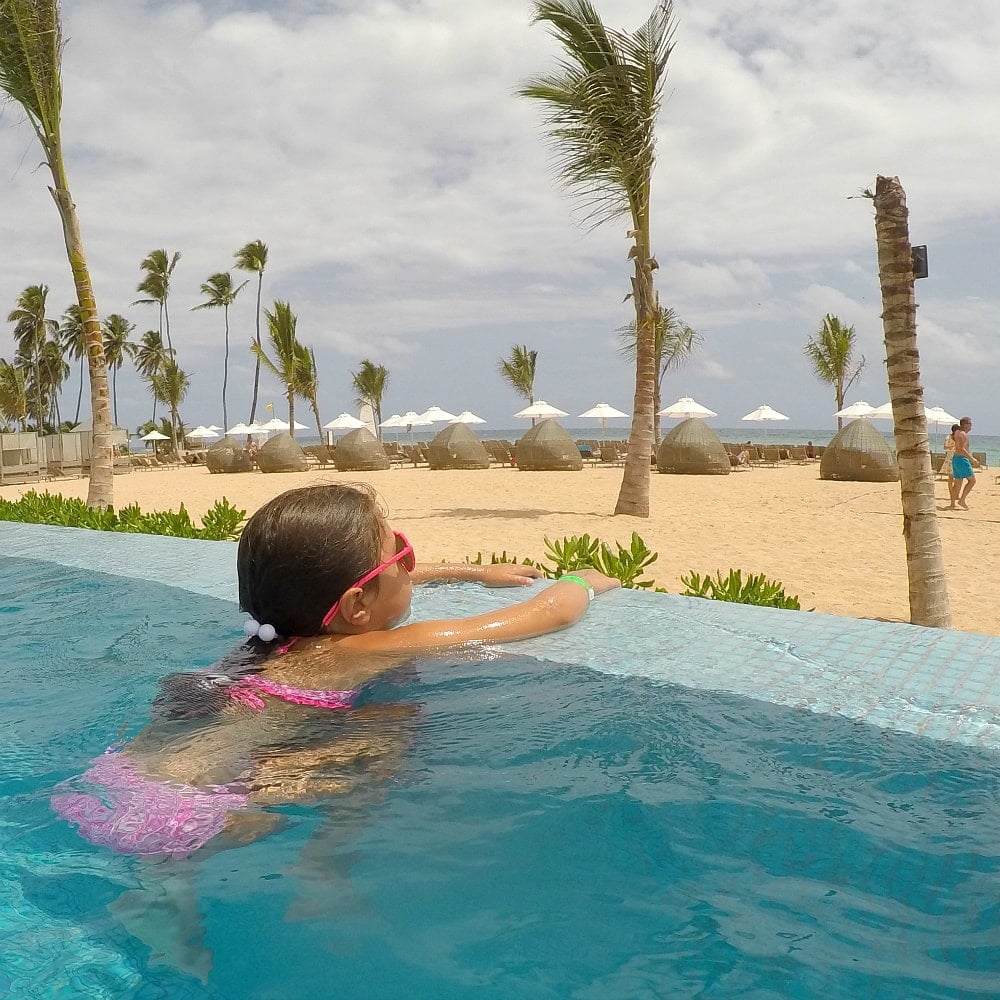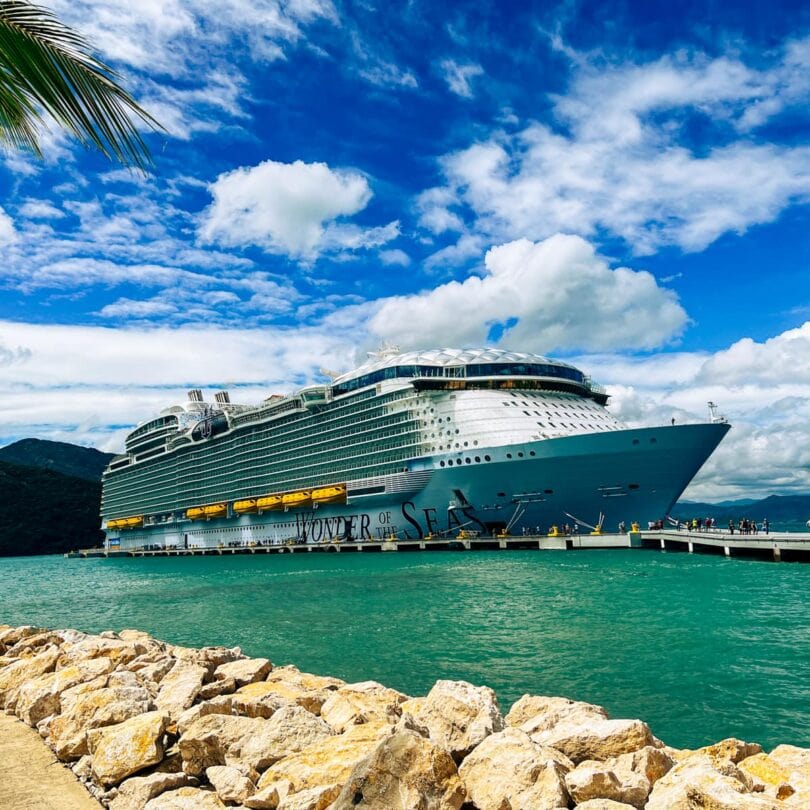Tips for Traveling with Kids on the Autism Spectrum
By definition, vacations are a break from the predictability of our work, school, and home routine. But for children on the autism spectrum who thrive on structure, the idea of venturing outside their familiar framework can be overwhelming. While traveling with kids on the autism spectrum presents challenges for parents, the overall benefits are worth a few bumps along the way. As a travel-loving mom to a child on the spectrum, here are my tips for making the most of your family vacations.

Traveling with kids on the autism spectrum is absolutely possible, and it doesn’t have to be difficult. Using pre-alerts, role playing and planning ahead can make it a positive experience, not only for the special needs child, but also for the entire family.
Travel Mamas and Grownup Getaways sometimes receive compensation and/or hosted travel and sample products related to blog posts. This story may include affiliate links for which we receive a small commission at no extra cost to consumers. As an Amazon Associate, we earn money from qualifying purchases.
1. Choose a destination with your child’s interests and limits in mind.
Before settling on a destination, consider which activities your child enjoys and what kinds of settings reduce anxious reactions. Some children on the autism spectrum prefer a bustling city with museums and galleries to explore, while others might be more comfortable communing with nature, beach-combing by the sea, or while camping in the woods. Try to match your destination to your child’s personality. You should also include him or her in the planning process. Adapt excursions to meet interests, attention span, and sensory processing capabilities as much as possible. This will make it easier for your child to succeed while away.
2. Prepare for travel with role-playing and visual supports.
Vacations come with transitions, which means changing from one situation to another. Children with autism can find this especially difficult. Role-playing weeks before the trip gives a child on the spectrum time to process what he or she might expect while on vacation.
A tailored picture schedule can also be an invaluable visual support. Showing your child what will happen and when can relieve stress and reduce anxiety. What’s more, your child will have a chance to process what’s ahead without being bombarded all at once.
Try making a picture schedule that’s sequential to cover various legs of your trip (if various stops are involved), and/or a chronological version that tackles day-to-day itineraries. This way, it can also do double duty as a pre-alert device. Include pictures of the airport, hotel, activities, emoticons, and even short captions to help narrate.
3. Anticipate your child’s needs
Since vacations are not part of the usual routine, children on the spectrum can get easily overstimulated in the face of spontaneous adventure. This, in turn, can trigger anxiety attacks or meltdowns. Look at every angle of the trip from your child’s perspective. This will allow you to pinpoint potential triggers. Then, you can factor in breaks and downtime as needed.
At the airport, consider pre-boarding your flight. Or, if it’s better for your child, you may want to wait to board until the last call. Pre-alert your child in anticipation of long security lines, and always call airlines in advance to check for delays and cancellations. You may also want to arrange for special requests and accommodations.

4. Pack the right gear.
Even different tastes, sights and sounds can be overwhelming from a sensory standpoint. Make sure your child has access to his or her preferred coping mechanisms. Useful travel gear to consider bringing along includes: noise-cancelling headphones, a smart tablet, fidgets, sunglasses, a weighted blanket and other soothers.
Keeping a neurotypical child safe while traveling is a lot like keeping a typical child safe, but with a few added precautions for those who have difficulty communicating or who are nonverbal. A Medical bracelet or an autism necklace makes an easy way to share your child’s diagnosis in case of an emergency. Utilize a zipper pull for those children who can’t tolerate jewelry because of sensory issues. You may also want to use labels with your child’s name, parent name and contact information stuck to the back of his or her shirt.
Make a dedicated packing list with the soothers mentioned above to keep children distracted yet calm, in addition to additional items your child relies on throughout his or her day. Think preferred snacks, books, DVDs, art supplies, assistive communication tools and favorite loveys. Be sure to include your child in the list-making process, too. Because while all kids are attached to their favorite things, children on the autism spectrum see them as a physical extension of themselves. If you forget to bring them along, then the entire trip might end before it starts.
5. Learn more about autism.
According to the Centers for Disease Control and Prevention, around 1 in 68 American children have autism. There is not one kind of autism.
A spectrum of characteristics comes with the neurological disorder including varying degrees of intellectual ability and/or disability, difficulties in motor coordination, gastrointestinal issues, challenges with social interaction, difficulties with verbal and/or non-verbal communication, repetitive behaviors, quirky and/or tantrum-like outbursts.
A saying among parents and therapists in the special needs community illustrates it best: “If you know one child with autism, then you know one child with autism.” Each individual on the spectrum is unique and affected just as uniquely.

My Family’s Autism Story
My husband and I started traveling with our special needs son before he was 2 years old. Now that he’s a tween, I’m proud to say he’s become a bonafide travel hound over the past decade.
After sustaining a mild stroke in utero, he was diagnosed with Sensory Processing Disorder. This is like a neurological traffic jam, which prevents certain parts of the brain from interpreting sensory information correctly.
He has also been diagnosed with Asperger’s Syndrome, which is a neurological disorder on the high-functioning end of the autism spectrum. Considered a less severe form of autism, Asperger’s is often called an “invisible disability.” That’s because affected children tend to be very intelligent and have solid academic skills in addition to doing well in sports and/or the arts. They often struggle, though, with conventional social rules despite wanting to have positive social interactions with peers.
Why Travel with Kids Who Have Autism
Travel is one of best gifts we can give our children, but so is teaching them that a break from the normal routine can be fun. I’m proud of my son’s atypical way of viewing the world. I encourage him to take ownership of his challenges while pushing his own limits in positive ways.
Traveling with kids on the autism spectrum presents wonderful opportunities to increase awareness, acceptance, respect, and support. My family looks at it as a two-way street. Not only does our son learn new ways to experience the world, but also the world learns new ways to experience him as person living with autism.
Learn more tips for traveling with kids who have disabilities.
How do you plan ahead when traveling with your special needs child? Any tips, stories or questions to share? Let us know in the comments below!
A Note from Travel Mamas: Travel Mamas does not provide medical advice, diagnosis or treatment. Although The Offbeat Travel Mama is a special needs mom and student in the medical field, she strongly recommends consulting your pediatrician, family doctor and/or therapeutic team before traveling with your special needs child to discuss any concerns or questions you may have.

















An intriguing discussion is worth comment. I believe that you need to write more on this issue, it might not be a taboo matter but generally people do not talk about these issues. To the next! Many thanks!!
As an autistic person myself, I do not appreciate the way you describe Aspergers Syndrome as a “less severe” form of autism. You may only see a small percentage of the “symptoms” externally; most of autism has to do with brain differences and how we perceive and interact and understand the world, all internally.
You can’t judge what is more or less “severe” about one autism vs another autism. The amount of external symptoms doesn’t necessarily reflect what’s happening inside. Someone might be really good at hiding autistic traits externally, but be anxious, constantly on the verge of meltdown, and evenly suicidal because of it. Is their autism is not severe?
You mentioned that “if you know ONE child with autism, then you know ONE child with autism. So please don’t define an entire Asperger community if you are only referring to ONE child. The quote originated from Dr. Stephan Shore, by the way, an autistic person himself, and it was “If you’ve met one person with autism, you’ve met one person with autism. Please, please, please continue to be an advocate but also empower your child to speak for himself.
Hi Delaine! Thank you for taking the time to comment. I will always be an advocate for my child, and for others on the spectrum. While I agree that some on the spectrum may be better at masking their symptoms outwardly as you suggested, I disagree in that autism is evaluated on a spectrum for a reason. Symptoms are wide ranging, and many can be much more severe than others when it comes function and need. That said, I can only hope that families will discover what works best for them while traveling.
I really liked what you wrote. This sentiment has so much truth and power: “If you know one child with autism, then you know one child with autism” . I have always loved to travel and did so a lot in my 20s and 30s–backpacking for months at a time with no set agenda and tons of spontaneity . Wow. It’s a whole new world traveling with my teen on the spectrum and so crucial for both of us to see ourselves as real adventurers. I wanted my son (and me ) to see and believe that we are limitless and that we write our own story. Yes, part of our voyage has included victimization and bullying and the isolation that being different can bring, but the bigger part is seeing All we can do and all the power we have to be a force of good in this world by showing love and compassion to others on their own journeys. We have gone to 15 countries together and show no signs of stopping. It’s rough, it’s real and it’s really empowering. Keep on traveling Pilar. You are an inspiration!
Thank you so much for the kind words, LetsGoLisa! I really appreciate it. You too are an inspiration, and I just love that you’re introducing the world to your son. Travel mamas, unite!
Thanks for your reply, Pilar! Just wanted to clarify when I wrote that part of our “voyage include victimization, bullying and isolation”–I was in no way referring to our world travels. We have had nothing but wonderful experiences and encounters with people around the world. I was referring to our experience at schools. Getting out and experiencing the bigger world and all the kindness we have been shown gives us tons of hope!
So happy to read your post about traveling with kids on the autism spectrum. My son also has Asperger’s Syndrome and is also a tween. We have only recently begun traveling with him, so we are still on a learning curve. One thing we found was important to him was making him aware of any changes in our travel plans. He does much better when we knows where, when, why and how when we travel!
So glad you enjoyed it, Kelly! The learning curve takes some time to master on a family level, but it sounds like you’re doing quite well! We do our best to pre-alert our son to any changes, though it can be more difficult when the unexpected happens – think two-hour security lines or flight delays. Role playing has helped with some of that, though the more he experiences some bumps, the more he feels equipped to deal with them. Happy travels to you and yours!